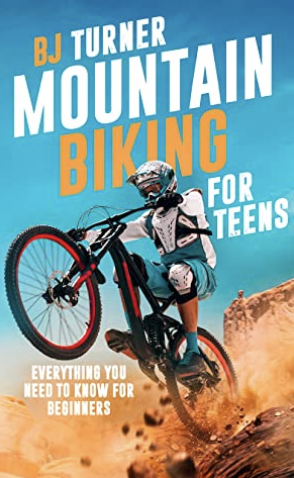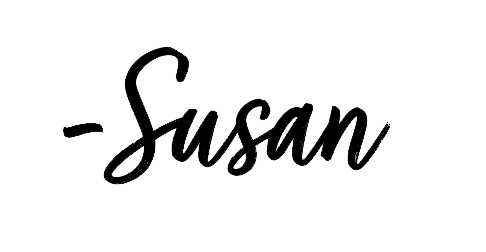
Authors need book reviews to get readers interested in buying and reading their books. Book reviews also help readers narrow down the many book choices, hopefully saving valuable time on deciding what book to read and actual reading time.
This month’s book theme is the backstory. The books I read this month are all about the backstory or the details and events that happen before the story begins.
Authors weave backstories into several genres, not just fiction. As you can see from my reviews this month, I have fiction, nonfiction and memoir.
Get ready to dive into the four marvelous books I read in July. The best part of July’s reading is that the books I read took a giant leap from two-star reviews to four-stars.
The Record Keeper by Charles Martin

I love seeing a movie without any idea what it’s about. Unfortunately, my love of surprises sometimes gets me into trouble, like when I read Migrations by Charlotte McConaghy and thought it was a nonfiction book for the first quarter.
So is the case with The Record Keeper by Charles Martin. Until I finished the book and read the first line of many book reviews, I realized this book was the last of his series.
But reading the last book in this series doesn’t matter (although going back to read the first two might be a bit tricker). Martin does an excellent job of catching a reader up. He slowly weaves the character details into the storyline, so you end up with a flowing narrative instead of a recap of the previous books. Martin explains the backstory that makes up the story’s setting in his brilliant way. I’m sure others who have read the earlier books in the series would find it a refreshing take instead of a rehash of the others.
What’s it about?
The Record Keeper tells the story of Murphy Shepherd and his partner Bones’ pursuit to stop human trafficking and the search for the leader of the largest human-trafficking crime ring. Freetown, an isolated town in Colorado, where young, rescued and mostly women can heal and move forward with their lives, sets the stage for the story. Shepherd and Bones’ lives start unfolding, and their backstories build the rest of the story.
What did I think?
The Record Keeper is an exciting story that kept me on edge, and I couldn’t wait to finish it. I enjoyed how Martin used the first half to explain the setting and story so that any reader can jump straight into the action-packed second half. Martin delicately handled this tough topic without using horrid details or harsh language. I wouldn’t say it was a “feel-good” story since human trafficking is horrible, but the story has admirable characters and a redeeming storyline, so I enjoyed it.
I also read and loved Martin’s book Chasing Fireflies, so I suspect the other books in the Murphy Shepherd series, The Water Keeper and The Letter Keeper, are winners too. Charles Martin typically writes books focused on his neck of the woods, the South. You can learn more about Martin on his website at: https://www.charlesmartinbooks.com/.
Mountain Biking for Teens: Everything You Need to Know for Beginners by BJ Turner

Here in Northwest Arkansas, mountain biking is booming. So much so that Bentonville, Arkansas, has named itself the Mountain Biking Capitol of the World (https://www.oztrails.com/). The trail system is so close that taking a long lunch break and going mountain biking has been a great new hobby for me.
Since so many local kids are joining the movement, I wanted to read an advanced reader copy of Mountain Biking for Teens: Everything You Need to Know for Beginners by BJ Turner. Some of the terms used are different since Turner lives in Australia. Still, it’s a must-read for any young adult interested in mountain biking but doesn’t know where to start.
Mountain biking isn’t the easiest sport to pick up, especially if you are not surrounded by people who know much about it. That is why this book is a must-have for any teen wanting to learn and start the sport of mountain biking. Whether you want to ride for fun or take on Enduro racing, this book is a perfect start to anyone’s mountain biking journey.
What’s it about?
The book is broken down into short chapters. The chapters are well organized, and the information is presented in short paragraphs and easy to follow. As the title states, this book is perfect for young riders. The book goes straight into the most important information an aspiring mountain biker needs and wants to learn.
The first few chapters prepare a mountain biker to get ready to ride with the appropriate equipment. I especially enjoyed the chapter on setting up your bike since positioning on the bike is so important in mountain biking.
There is also a great chapter on handling the uphill, downhill and tricky turning involved with mountain biking. Finally, the book discusses how to repair and maintain your bike, which is critical when mountain biking in areas without a bike shop nearby.
What did I think?
The best part of the book is the clear and uncomplicated information. If you are a beginner, you need plain and simple explanations. Turner did a great job of writing clearly, and straightforwardly, so you can follow the instructions easily without illustrations.
I also appreciated the safety tips in the text, not called out separately as warnings. This is a good guide for any mountain biking novice, especially young riders interested in easy-to-read, complete, well-organized and helpful descriptions of learning mountain biking.
You can purchase this book directly on Amazon at: https://www.amazon.com/dp/B09XHMST79/ref=dp-kindle-redirect?_encoding=UTF8&btkr=1.
What I Talk About When I Talk About Running by Haruki Murakami

Murakami is my sister’s favorite author. For my birthday, she gave me a stack of his books. I thought the best place to start was with What I Talk About When I Talk About Running, since I run every day and could easily relate to it.
Even though I run every day, you would think I had had enough and wouldn’t want to spend even more time reading about running. But the exact opposite happens. I become more motivated about running when I surround myself with people energized by running. Energy feeds the existing energy. So after reading this book, I was more pumped than ever to run more.
What’s it about?
In What I Talk About When I Talk About Running, Murakami explains how he started running, what keeps him going, and his running milestones while preparing for the New York City marathon. His brutal account of running the original marathon path from Athens to Marathon, Greece, was enough to keep me striving to become a better runner.
What did I think?
This memoir’s stories relate to anyone, so you don’t have to run or be a Murakami reader to enjoy this book. I enjoyed the simple yet engaging writing and didn’t want to put it down.
I’m sure Murakami fans will enjoy how he runs to fuel his writing process. The book gives an insider’s look into how he produces such great novels. However, I haven’t read any of his other books. I can assume this book’s style is very different than his others.
This book is for fans of Murakami and, of course, runners. To learn more about Haruki Murakami and his other books, visit his website: https://www.harukimurakami.com/.
Networking for Freelance Editors Practical Strategies for Networking Success by Brittany Dowdle and Linda Ruggeri

For my business book of the month, I chose one specific to freelance editors. Brittany Dowdle (https://www.wordcat-editorial.com/about) and Linda Ruggeri (https://www.theinsightfuleditor.com/) volunteer on the Editorial Freelance Association’s Diversity Initiative (https://www.the-efa.org/diversity-initiative/).
As I shared in my previous post – https://rivetservice.com/post/freelancer-confessions-and-lessons-learned/, although I am an extrovert, I have been struggling with how to network online. I am unsure where my networking efforts will pay off and whether it is all just a big waste of time.
What’s it about?
In the workbook Networking for Freelance Editors, Dowdle and Ruggeri explain that, yes, networking hopefully brings in more jobs. Still, it should first be a place to build community and share ideas. They explain how networking builds a community of other editors who understand what it’s like working alone and share thoughts on the trade and working with clients.
Despite the workbook style, there is more than enough information for even the most reluctant introvert. It can help you build a plan and confidence on where and how to network. For example, I liked the writing exercises that immediately made me stop thinking about networking and take action. I also appreciated the social etiquette tips, such as setting up a separate workspace for web-based calls and paying attention to the person calling.
Little tips like these are essential to learning when networking online. As the title suggests, this book works best for freelance editors, especially members of ACES, the EFA or PEN (Professional Editors Network: https://pensite.org/).
You can purchase this book at: https://www.amazon.com/Networking-Freelance-Editors-Practical-Strategies/dp/173642050X/ref=sr_1_1?crid=9VNI4R03QZVJ&keywords=networking+for+editors&qid=1659540372&sprefix=networking+for+editors%2Caps%2C95&sr=8-1.
Final Thoughts
What marvelous books did you read this month? Please leave a comment so I can put the book on my list. Remember, authors need book reviews to get readers interested in buying and reading their books. Book reviews also help make it easier for readers if they know what to expect from a book.
Are you an author who needs a book review or help with developing, editing or proofreading your book? If so, I’d love to discuss what editing includes and how I can help make your book marvelous. Please contact me at: https://rivetservice.com/contact-rivet-service/.







